
Situated on the west bank of the Rhône River, Cornas spans just over 100 hectares of vineyards. The region's unique terroir is a crucial factor in producing exceptional wines. The vineyards are planted on steep granite slopes, creating a challenging environment for grape cultivation. The granite soil provides excellent drainage and imparts a distinct minerality to the wines. The slopes also allow for maximum sun exposure, aiding in the ripening process of the grapes.
The primary grape variety grown in Cornas is Syrah, which accounts for 100% of the wines produced in the appellation. Syrah thrives in this continental climate, where hot summers and cold winters create ideal conditions for the grape to develop its complex flavors. The vineyards are meticulously managed by skilled winemakers who employ traditional and sustainable practices to ensure the highest quality of grapes.
Traditionally, Cornas wines were known for their rustic and tannic nature, requiring years of cellaring to soften and develop their complexity. However, modern winemaking techniques have brought about a shift towards producing more approachable and elegant styles of Cornas, while still maintaining the region's distinctive character.
In recent years, the popularity of Cornas wines has been on the rise, with wine enthusiasts and collectors appreciating their distinct character and aging potential. The limited production and high demand have led to increased recognition and higher prices for the wines of Cornas.
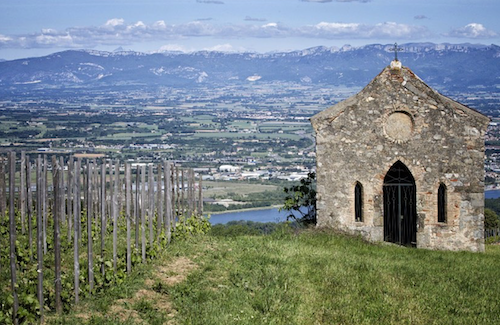 Domaine Alain Voge stands as a venerable institution in the prestigious Cornas appellation of the Rhône Valley, France. With a legacy tracing back to the 1950s, this winery has established itself as a beacon of excellence, consistently producing exceptional wines that reflect the unique character of the region.
Domaine Alain Voge stands as a venerable institution in the prestigious Cornas appellation of the Rhône Valley, France. With a legacy tracing back to the 1950s, this winery has established itself as a beacon of excellence, consistently producing exceptional wines that reflect the unique character of the region.
Alain Voge, a visionary winemaker, has been instrumental in shaping the reputation of Cornas wines. He has dedicated his life to crafting wines that express the distinctiveness of the terroir and the essence of the Syrah grape. Voge's deep understanding of the vineyards and his unwavering commitment to quality have earned him international acclaim.
The estate's vineyards are carefully tended, and the focus is on low-yielding, old vines that produce concentrated and expressive grapes. The rugged, granite-rich soils of Cornas impart a distinctive mineral character to the wines, adding complexity and depth. Traditional winemaking techniques are employed, including partial stem inclusion and extended maceration, to coax out the full potential of the fruit.
Domaine Alain Voge exemplifies the mastery of Cornas winemaking, capturing the spirit of the land and the artistry of the winemaker. With each bottle, it offers a profound and captivating experience that showcases the unique and extraordinary qualities of this exceptional appellation.
Grape Collective talks with Lionel Fraisse of Domaine Alain Voge on the terroir of Cornas, converting to organics, and the future of the region.
Lionel, talk about the history of Alain Voge.
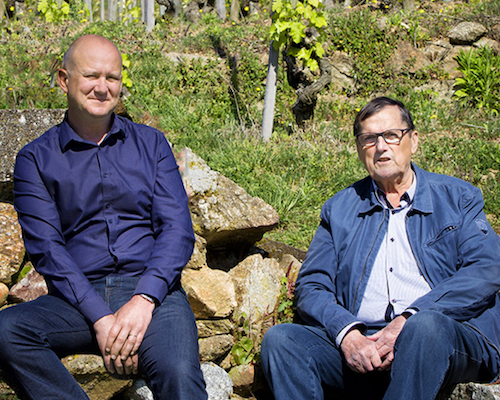 Lionel Fraisse: Alain Voge passed away two years ago and he was 81. He was the fourth generation of Voge in Cornas. His great-grandfather Henry Voge came from the other side of the Rhône, in 1905. Before Alain Voge's generation, they were not only winemakers like other families in Cornas. They were farmers with several activities, foods, nursery, animals, et cetera, and a little bit of vines and wine. But in Cornas, the generation of Alain Voge, after the second World War, in the '50s and the '60s, went only to the vineyard and winemaking. Alain changed or built a lot of things from the late '50s to the '80s, '90s.
Lionel Fraisse: Alain Voge passed away two years ago and he was 81. He was the fourth generation of Voge in Cornas. His great-grandfather Henry Voge came from the other side of the Rhône, in 1905. Before Alain Voge's generation, they were not only winemakers like other families in Cornas. They were farmers with several activities, foods, nursery, animals, et cetera, and a little bit of vines and wine. But in Cornas, the generation of Alain Voge, after the second World War, in the '50s and the '60s, went only to the vineyard and winemaking. Alain changed or built a lot of things from the late '50s to the '80s, '90s.
(Lionel Fraisse and Alain Voge)
And talk about that in a little more detail. In the Northern Rhône, Cornas in the '50s was not as well respected as it is today.
Oh, no, no. It was not the same.
How did that change? What was the process of making Cornas as respected in world restaurants and the world wine market as it is at the moment?
At this time, of course, Hermitage and Côte-Rôtie were in a very high place after the second World War, but that was not the case for Cornas. It was a bistro wine. The vineyard was planted in the valley with fruits, et cetera, to produce a lot and not to cost too much for production. It was the big négociant estate of the Rhône Valley managing sales. And this young man called Auguste Clape, Noël Verset, Alain Voge, they said, no, we can make better. We have to replant the slopes and we are looking for quality. First, they replanted the slopes. Then, they bottled by themselves, which is very important. And they decided to be free from the big négociant estates and to commercialize by themselves and to sell the wine by themselves. And that's why Alain Voge began to go to big family, and to Lyon, to Bocuse, and to other big chefs where French gastronomy was getting higher and higher. So Alain Voge was there to show the Cornas and, later, the Saint-Péray.
Talk a little bit about the Syrah that you work with. How is it different than Syrah from Hermitage, from Côte Rôtie, from Saint-Joseph?
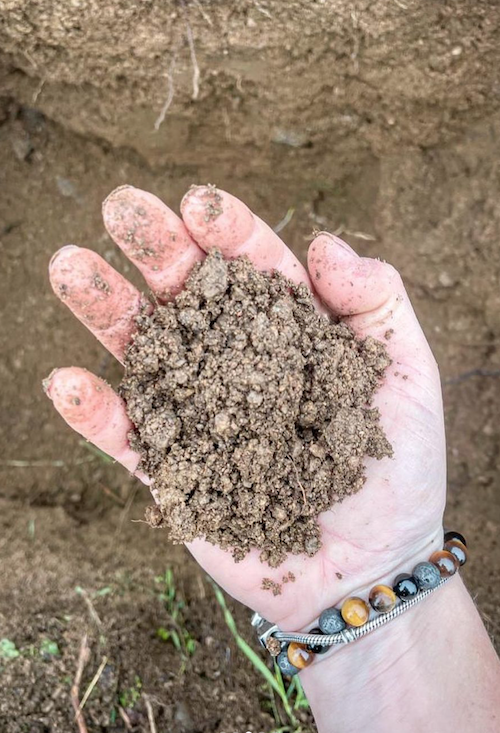 First, regarding the grapes, maybe it's the same family. The main difference is in the soil. Cornas soil is made of very old granite. When you walk in the vineyard, the mother rock is coming everywhere. You can take the rocks and break them with your fingers. In Côte Rôtie, it's impossible to do that. Those are just very, very hard stones. And Hermitage, you have the five geological periods. It's a big difference. The other thing is that in Cornas, Cornas means, in the Celtic language, burnt earth, "terre brûlée." And it means that Cornas is like three granite arenas exposed to the southeast, very good exposure with warmth and very good for concentration. In our vineyard, you can find a lot of typical Mediterranean plants. That makes a little bit of difference.
First, regarding the grapes, maybe it's the same family. The main difference is in the soil. Cornas soil is made of very old granite. When you walk in the vineyard, the mother rock is coming everywhere. You can take the rocks and break them with your fingers. In Côte Rôtie, it's impossible to do that. Those are just very, very hard stones. And Hermitage, you have the five geological periods. It's a big difference. The other thing is that in Cornas, Cornas means, in the Celtic language, burnt earth, "terre brûlée." And it means that Cornas is like three granite arenas exposed to the southeast, very good exposure with warmth and very good for concentration. In our vineyard, you can find a lot of typical Mediterranean plants. That makes a little bit of difference.
Talk about Saint-Péray. It's a very unique area in that it makes sparkling wine and it was one of the important regions for sparkling wine. And then, of course, phylloxera happened and Champagne kind of took off. It's an interesting story.
It's a very interesting story. In the beginning of the 19th century, in 1825, one of our winemakers in Saint-Péray used to sell some barrels to Champagne, because Champagne at the beginning of the 19th century was not what it is like today. It was sometimes difficult to get. There was no rule in the appellation. They used to go through the Rhône to buy some barrels in the South of France. And he said he would like to try that here. A technical team from Champagne came for four years. And the first bottle of Saint-Péray was made with this traditional method, the Champagne method. The first bottle disgorged in 1829. And it was an incredible success during all the 19th century, because it was the century of the sparkling wine in Great Britain to Russia.
A lot of success. And it's a bit of a paradox, because then came the phylloxera era, and the World War and an inside war between the négociants and the producers in Saint-Péray. The Saint-Péray appellation came in '36, the other appellations like Cornas and like Hermitage, of course grew. And then a sudden decline in Saint-Péray, in the other way. And the very deep crisis was in the '70s, '80s when there were no more sales, no more network. A lot of urbanization from Valence, the city on the side of the Rhône. We lost maybe 80% of the historical vineyard in Saint-Péray. And the rivers of Saint-Péray came in the late '80s on still white wine with some people like Alain, who created some wines in Saint-Péray. And the sparkling still exists, but it's a very old curiosity. It's a niche in a niche. Yes, we are the smallest sparkling appellation in the world because Saint-Péray makes 110 hectares in total and only 10% of the production goes to sparkling wine.
Talk about the philosophy, the culture, and the philosophy of winemaking of Alain Voge.
Mr. Voge was, of course, the generation, the '60s and the '70s and '80s. The very big challenge was to have a production limiting the cost in the slope. No mechanization, no tractors, all by hand. Of course during this time he used chemical products to help manage the soil. But every generation has his charge.
At the end of the '90s, at the beginning of the 2000s, Alain Voge was here and he decided to stop trying to manage the whole thing by himself. He had a partnership with Albéric Mazoyer, who was the technical director at Chapoutier wanting to go on a smaller ship. Albéric Mazoyer was a high practitioner and specialist of biodynamic and organic vine growing. Alain Voge was clever enough to let him do it. And the conversion to organics in the slope was made from 2006 to 2016. It took 10 years to make the whole conversion, because we are working without tractors, all by hand. And for managing the soils, we cannot cover crop. It is not a solution in the slope of Cornas. You cannot plant the grass. There is too much density of plantation, too much competition.
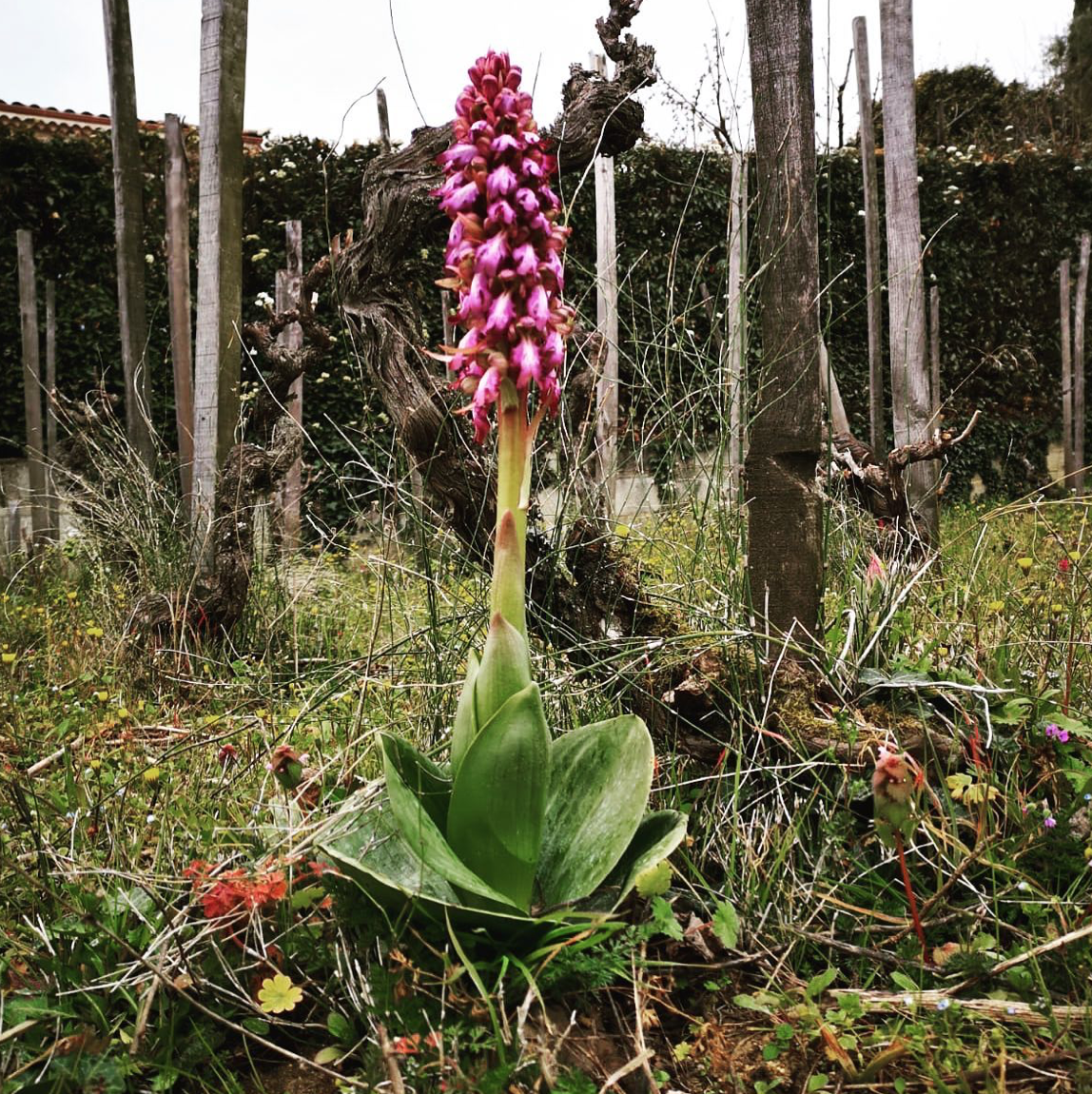 You have to hoe. You have to take off the grass, picking by hand. It's very complex technical machinery with several solutions and it took time. It's very expensive. It costs about 30% more. But Albéric Mazoyer was clever enough to know that it was a good way for the generation to present some wines which respect biodiversity. And maybe he was thinking, and he was right, that the young generation, next, will be more sensitive with these kinds of things. And he was right, because, of course, even my generation, we are sensitive to that point but we don't make a principles choice when we buy wine. But the new generation, no way. If you don't sell clean wines, they won't come. It's a very good balance. Now, it's over for me. When I came, I've been the manager since 2018, the technical itinerary in organics was done. I just have to be careful that it's good. But it was very, very hard work during 10 years.
You have to hoe. You have to take off the grass, picking by hand. It's very complex technical machinery with several solutions and it took time. It's very expensive. It costs about 30% more. But Albéric Mazoyer was clever enough to know that it was a good way for the generation to present some wines which respect biodiversity. And maybe he was thinking, and he was right, that the young generation, next, will be more sensitive with these kinds of things. And he was right, because, of course, even my generation, we are sensitive to that point but we don't make a principles choice when we buy wine. But the new generation, no way. If you don't sell clean wines, they won't come. It's a very good balance. Now, it's over for me. When I came, I've been the manager since 2018, the technical itinerary in organics was done. I just have to be careful that it's good. But it was very, very hard work during 10 years.
And how would you describe the character of the Syrah from a taste perspective in Cornas and then more specifically, at Alain Voge?
Cornas has the reputation of making very rustic tannic wines in the old styles, sometimes with a bad taste. There was big work in Cornas in the cellars for the aging process for the modern approach of enology that helped Cornas to go higher in the presentation of the wines. Today, which is very interesting in Cornas, is that we are like a family, we are all cousins. We have a little bit of the same face, but there is a lot of diversity. You have some people working in whole crops, some people destemming like Voge. And everybody makes long aging, a minimum of 16 months.
But you have diversity. You have very different styles of wines in this small family. It's very interesting. For Voge, the style of Voge is always keeping the freshness, looking for finesse. Not adding some strengths to the wine. The terroir gives you that strength, it's enough. Keep the freshness and look for finesse. That's the way we work. And I try to be very loyal to that, because that was Alain Voge, who created that style, regarding the organic winemaking, for example. A lot of people ask me the question, "Did the wines change when you went organic?" They didn't. Something changed inside the wine but not at all the style. We must be very modest with that.
And has climate change impacted the Northern Rhône?
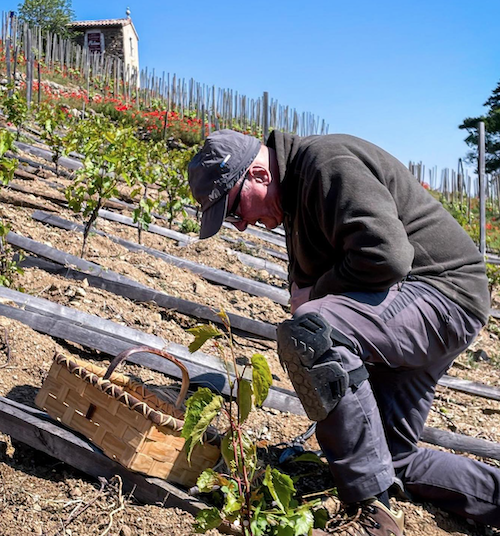 Yes. Of course we had a range with '17, '18, '19, '20 of four very warm and dry vintages. Then came '21, which is quite an opposite vintage. But '22, not too much heat. But the drought, incredible drought. We had only 300 millimeters. We need 800, 900. It was really not enough.
Yes. Of course we had a range with '17, '18, '19, '20 of four very warm and dry vintages. Then came '21, which is quite an opposite vintage. But '22, not too much heat. But the drought, incredible drought. We had only 300 millimeters. We need 800, 900. It was really not enough.
We have to adapt with that. We have to think about that. And the change we have at Voge is that we have this reflection of an organic itinery. And we work, for example, with our nursery which helps us to find solutions to have some plants in this very high density of plantation that will be able to survive through the drought on the slope with hard conditions. Now, for example, for the replaced plants on the slope, we will graft the plants in place. The nursery saves us some grafted plants. We will plant the roots first, waiting five years and then graft them. We were taught by Robert Michel.
(Robert Michel at the grafting site on the slope)
He is one of our old winemakers. And he's an old man, a neighbor. And two years ago, he was first a grafter. And I had, with my technical director, this reflection to graft on place. And I went to him and I said, "Robert, would you teach us to graft?" Because it's a hand work that went out of the estate. And it's not normal. The grafting should be made by all the vine growers. Now, I'm very proud about that, because we are able to graft by ourselves our root outcomes.














